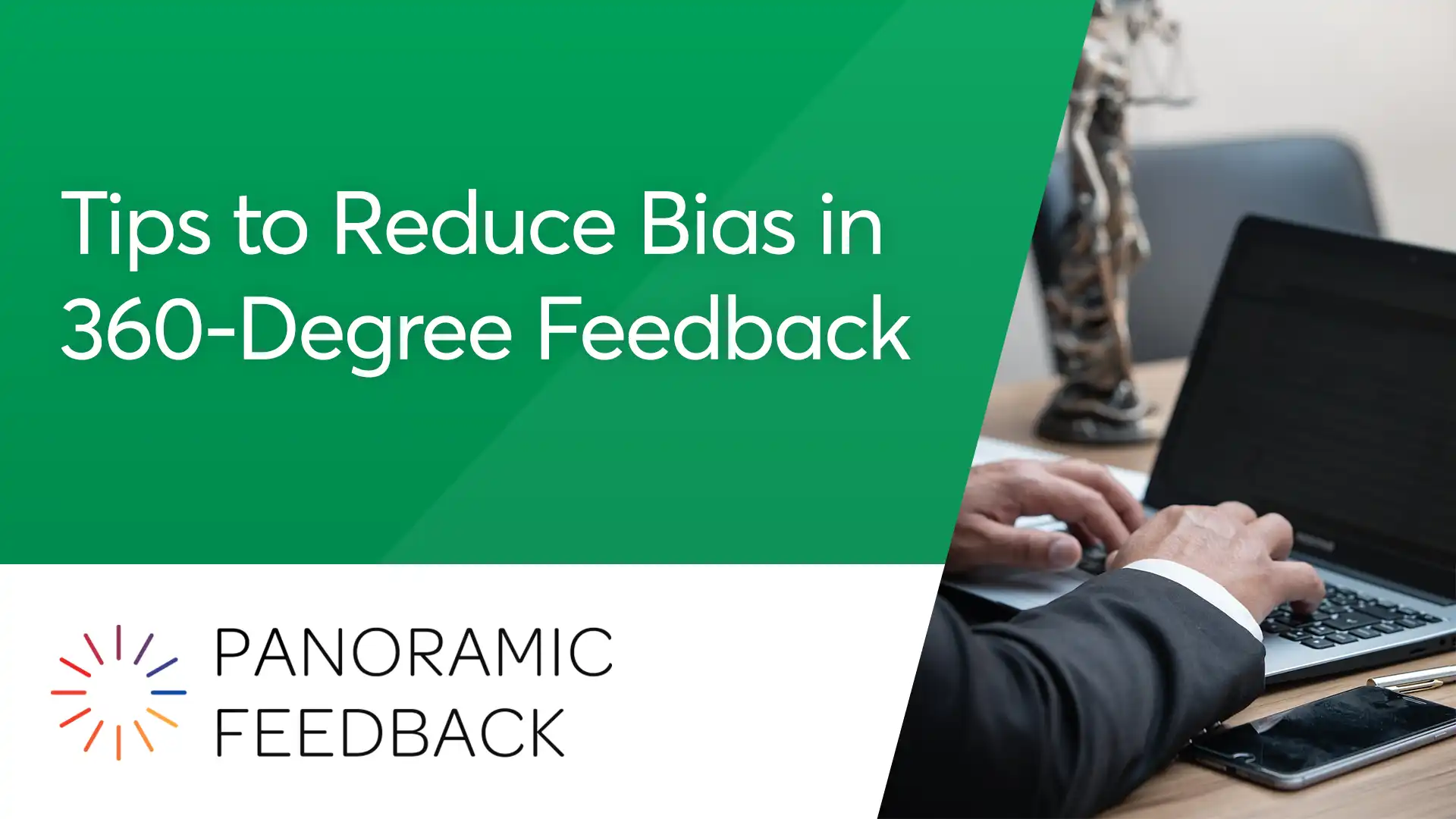Are biased responses creeping into your organization’s 360-degree feedback? If so, they may be distorting valuable insights. Follow these tips to reduce bias and gain more meaningful feedback in your next round of 360s.
1. Design a questionnaire with potential biases in mind.
Focus your 360-degree feedback statements on observable behaviors rather than personal opinions. For example, avoid 360 statements like “This person is a good leader”. Instead, clarify this statement with something specific, such as “Consistently provides clear directions to their team”.
2. Use Consistent Rating Scale.
To maintain consistency in feedback across all respondents, provide clear definitions for each rating level to avoid different interpretations.
3. Educate Responders about common biases.
a) Halo effect.
Happens when a responder’s overall impression of a person (positive or negative) affects all of their ratings. For example, if a responder views a colleague as highly competent in one area, like leadership, they might unconsciously rate them highly in unrelated areas, such as communication or strategic thinking, even if there’s no strong evidence to support those ratings. This bias can distort feedback, making it less useful for development.
To mitigate the halo effect, encourage raters to evaluate each competency separately and independently.
b) Recency bias.
Happens when a responder’s perception is overly influenced by the most recent events (i.e. when a Subject performed exceptionally well or poorly), rather than considering their overall performance over time.
To mitigate recency bias, encourage responders to reflect on the Subject’s performance over a longer period (e.g., the last 6–12 months), rather than focusing solely on recent interactions.
c) Central tendency bias.
Happens when responders avoid giving very high or low ratings, even when they are warranted, and instead give most responses around the middle of the scale. Such feedback makes it harder for the Subject to identify their true strengths and areas for improvement.
To mitigate central tendency bias, encourage responders to use the full range of the scale and provide ratings that truly reflect their assessment of the Subject’s performance.
d) Personal feelings bias.
Happens when responders allow personal relationships, whether positive or negative, to influence their ratings instead of focusing on objective performance.
To mitigate personal feelings bias, encourage responders to focus on specific behaviors rather than personal feelings toward the Subject.
4. Encourage Written Comments.
Educate responders on how to provide specific examples that support their ratings.
For example, instead of just saying ‘Great team player,’ a better comment would be, ‘In the last project, they stepped in to help a struggling colleague meet a deadline.’ Or, instead of ‘Reliable,’ provide a more detailed comment: ‘Consistently meets deadlines and has never missed a meeting or task, even when faced with competing priorities.’
5. Reassure anonymity.
Reassure responders that their feedback will remain anonymous. Without anonymity, they may hesitate to provide critical feedback, especially for supervisors or peers. When confidentiality is ensured, responders are more likely to share candid insights without fear of repercussions, reducing the likelihood of biased feedback.


